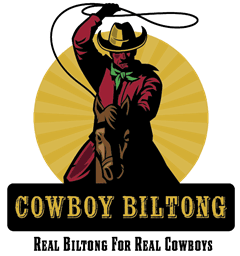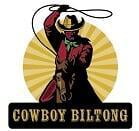When it comes to savory, protein-packed snacks, biltong and jerky are two names that often come up. While they both involve the process of preserving meat, these two snacks have distinct differences that set them apart. In this blog, we'll delve into the world of biltong and jerky, exploring their origins, preparation methods, flavors, and textures to help you understand the unique qualities of each.
When it comes to savory, protein-packed snacks, biltong and jerky are two names that often come up. While they both involve the process of preserving meat, these two snacks have distinct differences that set them apart. In this blog, we'll delve into the world of biltong and jerky, exploring their origins, preparation methods, flavors, and textures to help you understand the unique qualities of each.
Origins and History
Biltong and jerky have different origins, reflecting the cultural and historical contexts of their creation. Biltong hails from South Africa, where indigenous tribes and early settlers needed to preserve meat in a hot and dry climate. The result was a method that involves air-drying marinated slices of meat to create a flavorful and tender snack. On the other hand, jerky traces its roots back to ancient civilizations like the Incas, Native Americans, and indigenous tribes across the world. Jerky is typically made by seasoning and drying thin strips of meat.
Preparation Process
One of the key differences between biltong and jerky lies in their preparation methods. Biltong is typically made by marinating meat in a mixture of vinegar, spices, and herbs before air-drying it in a controlled environment. This slow drying process helps retain the meat's tenderness while infusing it with rich flavors. Jerky, on the other hand, is often marinated in a mix of sauces and seasonings before being dehydrated or smoked at a low temperature.
Flavors and Seasonings
Another notable distinction is the flavor profiles of biltong and jerky. Biltong boasts a robust and multi-layered taste, thanks to its marinade and air-drying process. The flavors are evenly distributed throughout the meat, resulting in a more nuanced taste experience. Jerky, on the other hand, can range from mildly spiced to intensely smoky. The drying process of jerky can sometimes concentrate the flavors, giving it a more intense burst of taste.
Texture and Appearance
Texture is a significant point of contrast between biltong and jerky. Biltong is known for its chewy yet tender texture. The slow drying method preserves the moisture within the meat, resulting in a pleasant chew that releases layers of flavor. Jerky, by comparison, tends to be drier and harder due to the dehydration process. The texture of jerky is often described as tough and leathery, making it a snack that requires more chewing.
Nutritional Profile
Both biltong and jerky are renowned for their high protein content, making them popular among health-conscious individuals and fitness enthusiasts. However, biltong typically retains more of its natural nutrients due to its air-drying process, whereas the dehydration of jerky can sometimes lead to a reduction in nutritional content. Additionally, biltong is often lower in sodium compared to jerky, making it a preferred choice for those watching their salt intake.
Conclusion
In the realm of meat snacks, biltong and jerky are both unique in their own right. While they share the common goal of providing a protein-packed treat, their differences in origin, preparation, flavors, textures, and nutritional profiles set them apart. Whether you're drawn to biltong's tender chew or jerky's intense flavors, both snacks offer a delightful experience that can cater to a variety of tastes and preferences. So, the next time you're in the mood for a savory bite, you'll be equipped with the knowledge to choose between these two delicious options.

